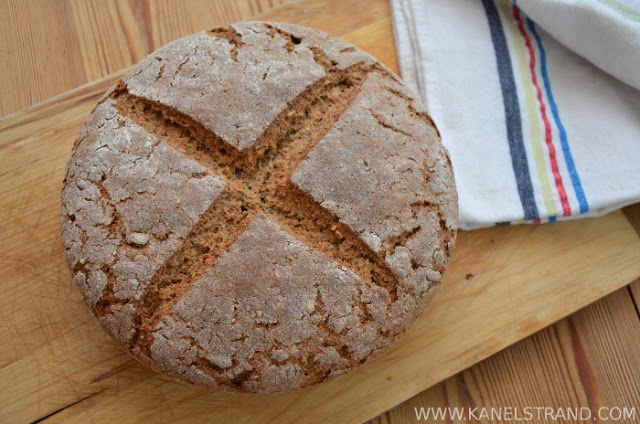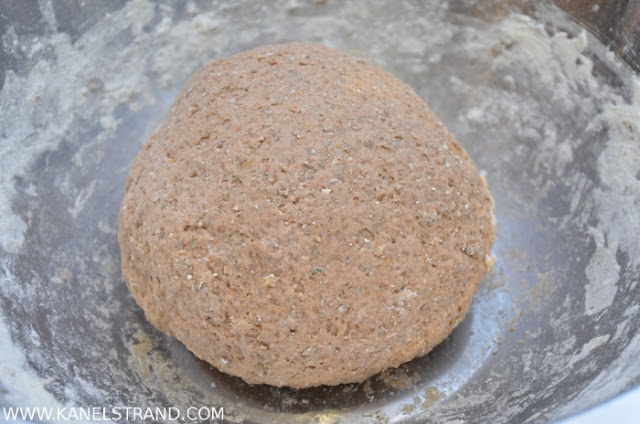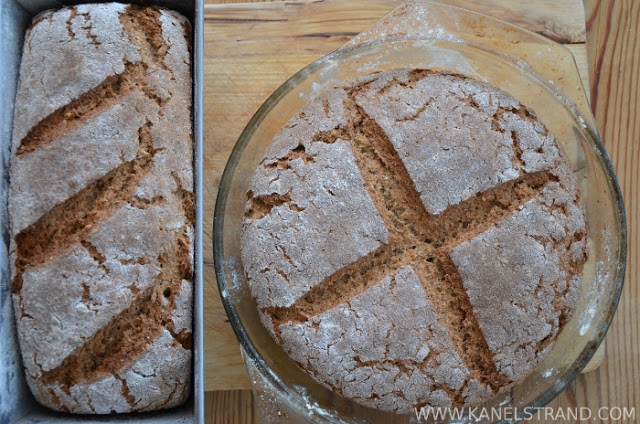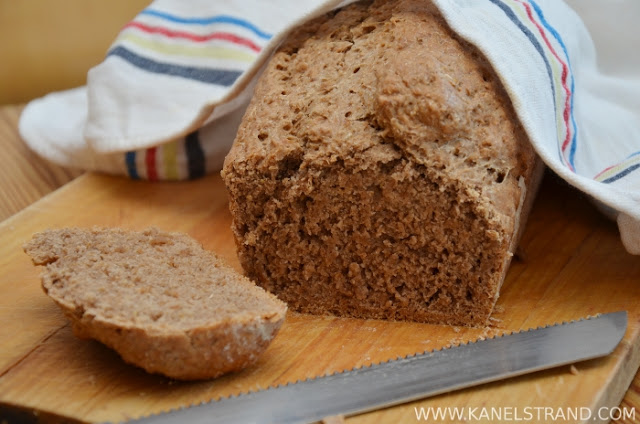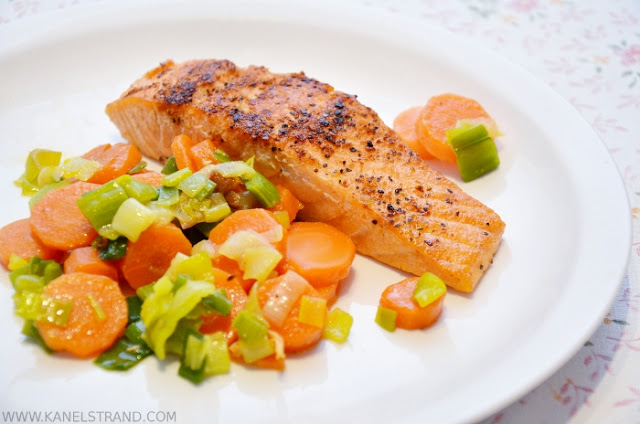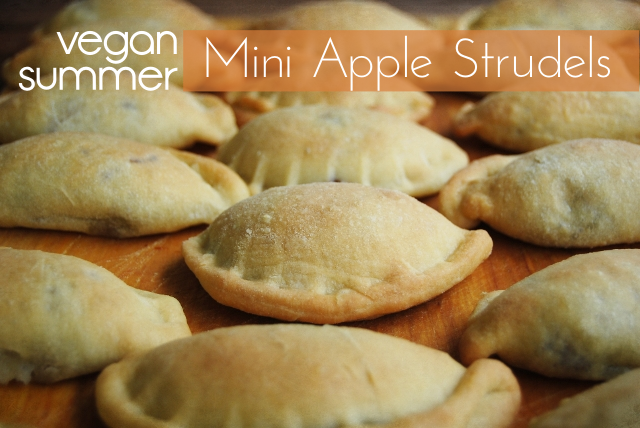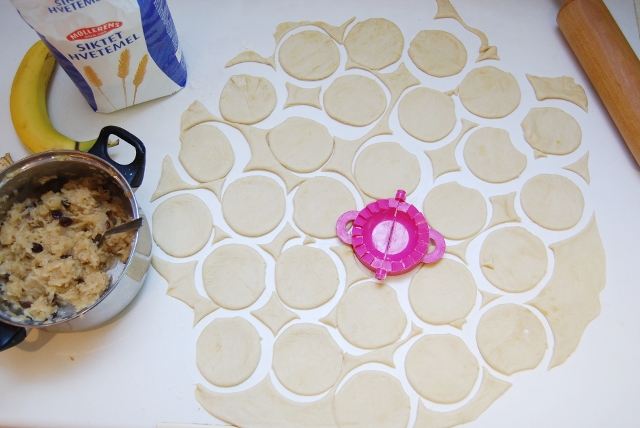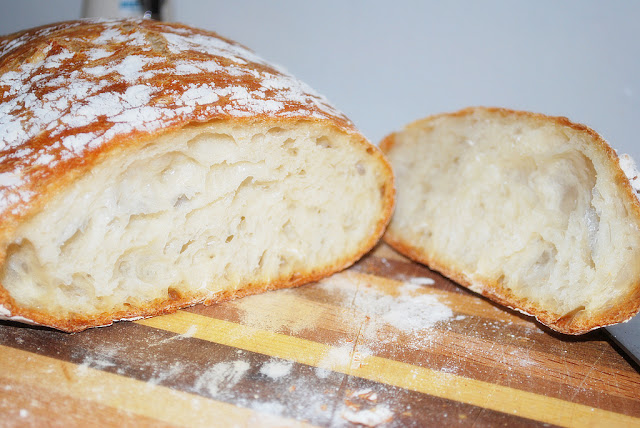When I started my own family and entered the world of bread baking little did I know that this was a step to simple living but by creating food as essential as bread from scratch I intuitively felt independent, grown-up and free.
7 years into the journey, my strictly wheat flour bread repertoire has been met with applause but today I want to share with you the latest baked favorite in our household -- the most delicious and rich rye bread recipe that I made up myself.
It is appropriate for those of you who have never even baked bread because it is so easy. With rye you don't have any of the difficulties you will meet in wheat baking.
Rye bread is naturally more wet and doesn't rise as much as "white bread" but with some additions you can turn it into a hearty and healthy meal!
For this recipe I also used a little bit of barley and wheat flours. We don't have any gluten problems at home and I believe that moderation is key to health, so they shouldn't be a problem in the proportions used. But if you follow a gluten-free diet you can substitute them with any other gluten-free flours.
Confession: I tend to use recipes for general ideas and usually change half of them in the process of cooking. I encourage you to do the same and not stick 100% to any recipe but personalize it according to your taste and needs.
The Most Delicious Rye Bread
Produces two middle sized loaves
- 3 cups rye flour (coarsely ground)
- 1 cup barley flour
- 1 cup wheat flour
- 1 cup rolled oats
- 1/3 cup flax seed (crushed)
- 2/3 sunflower seeds
- 1 2/3 cups water
- 1 cup boiling water
- 3 tablespoons honey
- 3 tablespoons sugar
- 1 tablespoon salt
- 1 tablespoon unsweetened cacao
- yeast for 2 kg (4,50lb) flour, this is roughly double the actual weight of the ingredients.
Start by pouring 1 cup of boiling water over the rolled oats, add 3 tablespoons honey and leave to soak for about 15 minutes or until all the water is absorbed.
Dilute the yeast together with the sugar in 1 2/3 cups water. Let rise for 15 minutes. I always do this regardless of what kind of yeast I use, just to check whether it is active.
In a large bowl combine the flours, salt, cacao, the flax seed and the sunflower seeds. Mix well. Make a well in the center and transfer the rolled oats. Pour the risen yeast.
It's time to get your hands dirty. First try to break the oats (they should look like a stiff paste) and then start working the flour into the liquid center. Continue until you have a sticky but manageable dough.
In the adventurous baking spirit I would advise you to decide for yourself whether the dough is hard enough for your taste. It shouldn't be rock hard and it shouldn't be runny either. You might need to add some more flour or water.
Place the dough in lightly oiled clean bowl, grease on top, cover and let rise for about an hour in a warm place. Knead a little bit more and form into a loaf.
Transfer to a greased form (or two in my case). Make a decorative cut and let rise again for about 30 minutes.
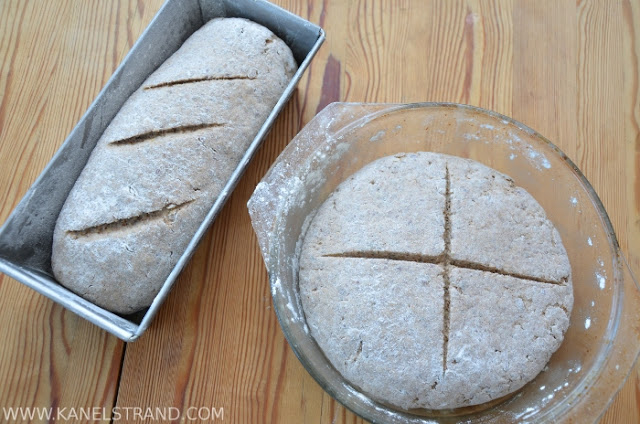 |
| This is how my loaves looked before rising. |
You should wait for 24 hours before you eat this incredibly delicious bread. In fact, the longer it stays the tastier it becomes.
I love eating it for breakfast with a swipe of butter, a slice of cheese and a cucumber, salad or spinach leaves for freshness.
Mmm, my mouth is watering as I write, I'd better start baking my next batch!
Now it's your turn. What is your favorite rye bread recipe? If you haven't baked so far what could make you try?
This post is part of Eat Healthier month on Kanelstrand. Read the rest of the posts here and join in the discussions, we'd love to know what you think!
